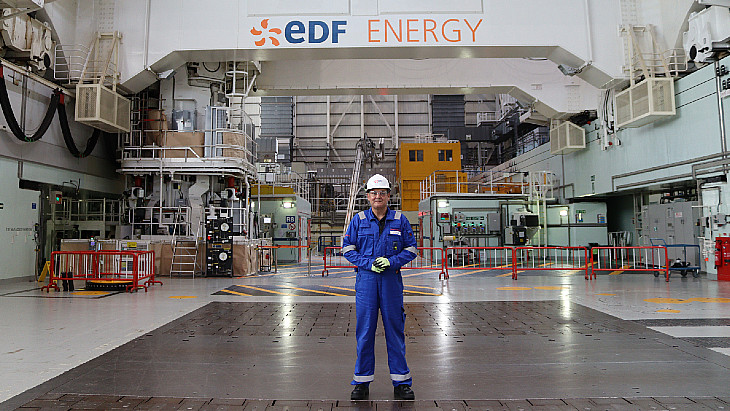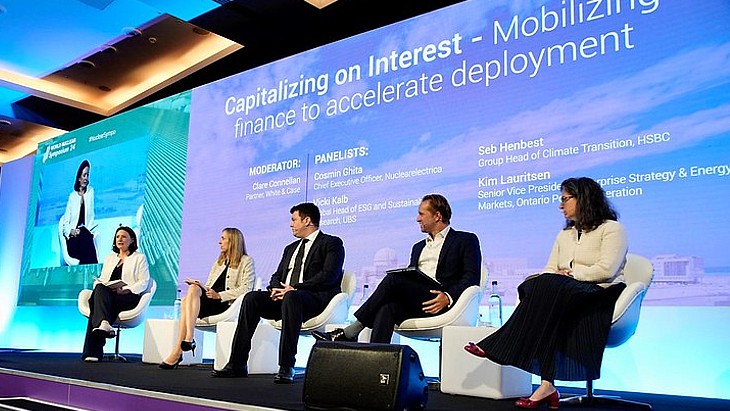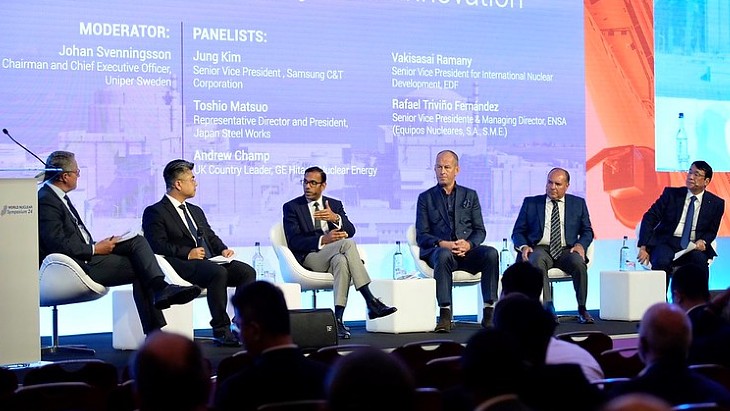Viewpoint: The advantages of Small Modular Reactors

The first automobile was a steam-powered wagon built in 1769 by French inventor Nicolas-Joseph Cugnot. Over the course of the next century, improvements were introduced by various inventors, and in 1913 Henry Ford created the first mass-produced automobile - the Ford Model T. Moving from one-at-a-time production to a factory production line, the Model T revolutionised transportation, making the automobile affordable and available to a far wider market than had previously been possible.
Like the first automobiles, today’s large nuclear reactors are largely produced one-at-a-time, with each new one different from the last. Despite efforts to standardise designs, it is not uncommon for even different units at the same power plant to have significant differences in design. Like the early automobile industry, the current market for nuclear power is largely limited to wealthy buyers with deep pockets, but are we on the cusp of nuclear power’s Henry Ford moment? It certainly looks like it.
SMRs promise to bring nuclear power to the masses in much the same way that the Ford Model T brought mobility to the masses over a hundred years ago. But first, what is an SMR?
SMRs are small. And modular.
There are literally dozens of designs for SMRs being proposed by vendors, with technologies ranging from traditional light water moderated cores to exotic molten salt and molten-metal-cooled cores. At the risk of stating the obvious, what they all have in common is that all SMRs are small and have modular construction.
In this case small means small in comparison to a conventional nuclear power plant. Where a modern new nuclear project will typically have a rated capacity of between 1000 and 1600 megawatts electric, an SMR will have a capacity of around 300 MWe or less. Modular means that the major components of the SMR will be built in a factory and assembled on-site. By being small and modular, SMRs have many advantages when compared to traditional large reactors.
Size matters
The small size of the SMR gives it several advantages over large conventional designs. The first being that the major components of SMRs will be small enough to be made on a production line in a factory, rather than being assembled one item at a time.
The second major advantage is that even the reactor vessel of an SMR is compact enough to be transported from the factory to the construction site by boat, truck, or even railway car. Unlike conventional large power plants, which have gigantic components that are difficult to transport, SMRs do not require huge bespoke transporters, highway closures, or reinforcement of bridges along the transportation route. With SMRs, getting all the kit to the construction site is a lot easier.
A third advantage is that SMRs have smaller emergency planning zones (EPZs), which is the area expected to be affected by a nuclear accident that results in the release of radioactive material. Large nuclear reactors have a ‘plume exposure pathway’ EPZ, which is about ten miles, and a larger ‘ingestion exposure pathway’ EPZ, which, depending on the country, is typically about 50 miles from the site. The ingestion exposure pathway represents the area where radioactive materials could be ingested through contaminated water of food.
The United States Nuclear Regulatory Commission recently took the position that the smaller amount of fuel in the reactor cores, simpler systems, and reliance on built-in passive safety features of SMRs eliminate several potential emergency scenarios. As a result, the off-site emergency planning requirements can be scaled down to be proportionate to those reduced risks, including an EPZ size that need not extend beyond the plant site boundary. In other words, ‘small’ means ‘safer’.
Also, fewer materials and resources are needed to build and operate an SMR, so nuclear development can proceed in bite-sized morsels. With SMRs, a country can add power in smaller increments than would be possible with a large reactor program. In countries with a smaller electrical grid, this is a major advantage because, to ensure grid stability, no single generator should provide a disproportionate share of the electrical load. In sub-Saharan Africa and in the polar north, for example, SMRs are the only nuclear technology that would be compatible with existing power grids.
Finally, there are a far greater number of suitable construction sites in countries like the UK for SMRs, than there are for large reactors. Large reactors need low population zones, and a relatively large site with access to large volumes of cooling water. SMRs are much less demanding in terms of siting.
The virtues of modularity
One definition of a module is “each of a set of standardised parts or independent units that can be used to construct a more complex structure,” which exactly describes the modularity of SMR designs.
Modularity enables mass production, which will ensure consistency in quality from one SMR to the next, and that production will take place indoors away from the wind, rain, and sand typically present at a construction site. Mass production in a factory will also drive down unit costs as compared to bespoke, one-off designs.
As noted above, the SMR is made of any number of modules, depending on the design, that are made in a weather-tight factory and are then assembled on site. This should result in more consistent construction and higher quality and reliability, which is a big step forward.
However, the biggest advantage of the modular design is the great reduction in construction risk.
By building modules in a factory and connecting them together on a pre-made foundation at the construction site, most of the variables associated with construction of a nuclear plant are eliminated. Of course, there will always be some site preparation needed, such as construction of pump houses for cooling water and of the foundation or seismic ‘raft’ on which the SMR will sit, and associated excavation which is always subject to variabilities in sub-surface conditions. The big difference is that this work can be done before the SMR construction begins.
In theory, the site would be ready to receive the SMR and would be subject to few, if any, expensive contract variations. While typical large reactor projects can take up to ten years or more to build, SMRs should be able to be built in far less time, perhaps in as little as three years.
Looking forward
In the UK, for example, the government has enthusiastically embraced the idea of a domestic SMR industry and is actively supporting development through a variety of initiatives, including providing up to GBP20 million for supply chain development, GBP7 million (USD9 million) for regulatory readiness, and up to GBP44 million in the Advanced Modular Reactor Feasibility and Development project. The future for SMRs in the UK therefore looks bright indeed.
Vincent Zabielski is senior lawyer at Pillsbury Shaw Pittman.
Comments? Please send them to: editor@world-nuclear.org










